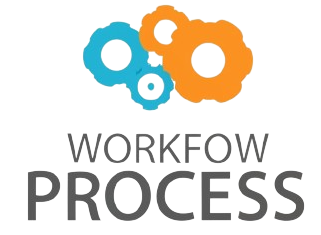Zero-shot prompting has rapidly become a key concept in the realm of artificial intelligence, particularly in natural language processing. At its core, zero-shot prompting allows AI models to perform tasks they were never explicitly trained on, simply based on the instructions or queries they receive. This approach contrasts with traditional methods that often require extensive labeled data for each specific task. By leveraging large pre-trained models, zero-shot prompting unlocks versatile, efficient, and scalable uses of AI without the need for retraining. In this article, we’ll explore how zero-shot prompting works, its practical applications, its benefits and limitations, and what the future might hold for this fascinating technique.
Understanding zero-shot prompting
Zero-shot prompting is a method where an AI model is given a direct prompt or instruction to perform a task without having seen any examples or prior training specific to that task. Instead of relying on past exposure, the model interprets the prompt and generates an answer based on its general knowledge.
For instance, imagine you ask a language model to classify the sentiment of a movie review without providing any labeled examples of sentiment classification. If the model accurately identifies the review as positive or negative, it is performing zero-shot prompting.
Real-world scenario: A customer support chatbot is deployed for a brand’s new product line. The company hasn’t yet trained the model specifically on queries related to these products. Using zero-shot prompting, the chatbot can still interpret and respond correctly to questions about the new items just by the instructions embedded in the user prompt.
The mechanics behind zero-shot prompting
Zero-shot prompting leverages the immense training data and contextual understanding embedded within large models like GPT or BERT. These models have been trained on vast amounts of text, learning language patterns, reasoning, and factual knowledge.
When given a prompt, the model applies this foundational knowledge to solve a new task, guided only by the semantics of the input command. Crucially, the quality and clarity of the prompt strongly influence the outcome. Well-crafted prompts help the model understand the objective and generate accurate responses.
Practical case study: In a financial firm, analysts use zero-shot prompting to automatically generate summaries of complex reports. They instruct the model, “Summarize this quarterly earnings report focusing on revenue and expenses.” Even though the model wasn’t specifically trained on company reports, it produces concise, relevant summaries thanks to its broad training on financial language.
Applications of zero-shot prompting in industry
Zero-shot prompting finds applications across many fields due to its flexibility and efficiency:
- Content creation: Writers and marketers use models to generate blog posts, ad copies, and product descriptions without needing dedicated training data for each niche topic.
- Translation: Models can translate text between languages pairs that were never directly paired during training.
- Sentiment analysis: Brands analyze customer feedback across new products or services instantly.
Example: An e-commerce platform adds a new product category. Without retraining their AI, they apply zero-shot prompting to classify customer reviews by sentiment and relevance, enabling rapid response to customer needs and product improvements.
Advantages and challenges of zero-shot prompting
The main advantage of zero-shot prompting is its ability to rapidly adapt to new tasks without additional data collection or training, saving time and resources. It also allows users to explore AI capabilities interactively by tweaking prompts.
However, challenges remain:
- Prompt sensitivity: Slight changes in wording can yield drastically different results.
- Performance variability: While zero-shot may work well for general or closely related tasks, it often falls short compared to fine-tuned models on specialized problems.
- Interpretability: It may be difficult to understand why a model responded in a certain way without examples guiding it.
Case study: A legal firm tested zero-shot prompting to draft contracts but found inconsistencies with complex clauses. While basic contracts were generated successfully, they needed human review and adjustments, revealing limitations on highly specialized language and tasks.
Future prospects of zero-shot prompting
As language models continue to grow in size and sophistication, zero-shot prompting is expected to become even more reliable and widely used. Research is underway to develop better prompt engineering techniques, automated prompt optimization, and hybrid approaches combining few-shot and zero-shot learning.
In practical terms, this evolution will enable many industries—from healthcare to education—to deploy adaptable AI tools rapidly without extensive retraining.
Example: In healthcare, clinicians may soon harness zero-shot prompting to extract patient insights from unstructured medical notes, even for rare diseases where labeled examples are scarce.
Conclusion
Zero-shot prompting revolutionizes how AI models are applied by allowing tasks to be performed without prior task-specific training. Grounded in the extensive general knowledge of large language models, this method relies heavily on clear and precise prompts to guide output. Its practical applications are already evident in diverse industries, helping teams accelerate workflows and reduce dependency on large labeled datasets.
Nonetheless, zero-shot prompting is not without challenges, including sensitivity to prompt wording and potential limitations with highly specialized or nuanced tasks. As research and model capabilities improve, we can expect zero-shot prompting to become an even more powerful and accessible tool, enabling flexible AI adoption across new domains and unforeseen problems.
